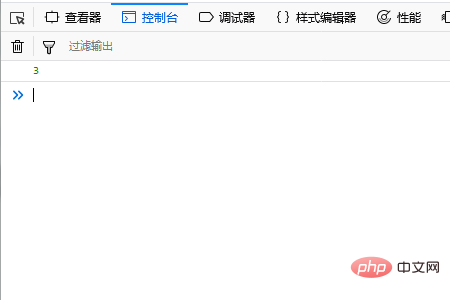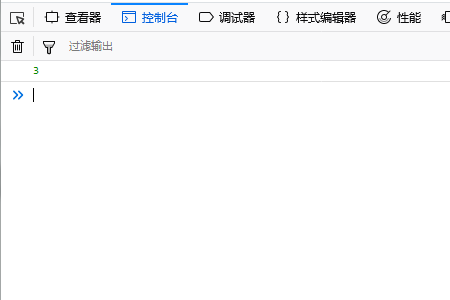How to use JavaScript's immediate execution function
How to use JavaScript’s immediate execution function? This article will introduce to you how to use JavaScript immediate execution functions.

Let’s take a brief look at what function is?
A function is an event-driven or reusable block of code that executes when it is called.
In other words, if you use a function multiple times, you can simply use it by calling it.
Use fonction, defined as follows.
fonction 函数名(){
执行的代码
}Let’s take a look againWhat is an anonymous function?
As the name suggests, an anonymous function is a function whose functionality can be defined without a function name
Using anonymous functions also has the advantage of simplifying the code when using higher-order functions.
A higher-order function is a function that can handle the function itself as a parameter or return value.
In higher-order functions, the function as a parameter is usually used only once, so I can make the code simpler by making it an anonymous function.
Additionally, since you don't need to define a global scope name by making it an anonymous function, you also reduce errors caused by duplicating function names.
Comparison of normal function and anonymous function
Let us compare normal function and anonymous function based on the following program.
function( ) {
执行的代码
}Normal function (named function)
The code is as follows
<!DOCTYPE html>
<html>
<head>
<meta charset = "utf-8">
<title>JavaScript</title>
</head>
<body>
<script>
function sum(a,b){
var result = a + b;
return result;
}
var answer = sum(1,2);
console.log(answer);
</script>
</body>
</html>When called using console.log, according to parameters 1 and 2 Output "3".

Anonymous function
Next we use anonymous functions to write the same function
The code is as follows
<script>
var sum = function (a,b){
var result = a + b;
return result;
}
var answer = sum(1,2);
console.log(answer);
</script>In a named function, we first define the function sum, we later assign sum to the variable answer and call it with parameters 1 and 2.
On the contrary, in an anonymous function, the definition of the function can be entered directly in the variable. Therefore, being able to store the function definition itself in the variable is also an advantage of anonymous functions.
The result is the same

Finally, let’s take a look at the usage of immediate execution function
immediate function Is an immediately executed function expression, called IIFE (immediately invoked function expression) in English.
The immediate function is executed immediately after it is defined.
Therefore, it is called an immediate execution function.
Use immediate function, as long as the function is defined, it can be executed immediately.
Local variables are declared in a function and used throughout the declared function.
Global variables are variables declared in the global scope, so they can be used anywhere in a JavaScript program.
For example, if a global variable is declared outside a function, it can be used both inside and outside the function.
Let’s look at an example of an immediate function
var declares a variable, and the function definition starting from functions can be executed immediately.
The code is as follows
<script>
var sum = (function (a,b){
var result = a + b;
return result;
})(1,2);
console.log(sum);
</script>We execute the function definition by immediately providing parameters to it.
So far we have assigned the function sum to the variable answer and passed the parameters. Omitting it as a variable answer means you can pass arguments directly to the defined function and execute the content.
This program is very smooth since you don't need to use var answer = sum(1,2); to call the function.
The running results are as follows: the result is also 3

The above is the detailed content of How to use JavaScript's immediate execution function. For more information, please follow other related articles on the PHP Chinese website!

Hot AI Tools

Undresser.AI Undress
AI-powered app for creating realistic nude photos

AI Clothes Remover
Online AI tool for removing clothes from photos.

Undress AI Tool
Undress images for free

Clothoff.io
AI clothes remover

Video Face Swap
Swap faces in any video effortlessly with our completely free AI face swap tool!

Hot Article

Hot Tools

Notepad++7.3.1
Easy-to-use and free code editor

SublimeText3 Chinese version
Chinese version, very easy to use

Zend Studio 13.0.1
Powerful PHP integrated development environment

Dreamweaver CS6
Visual web development tools

SublimeText3 Mac version
God-level code editing software (SublimeText3)

Hot Topics
 1392
1392
 52
52
 What should I do if I encounter garbled code printing for front-end thermal paper receipts?
Apr 04, 2025 pm 02:42 PM
What should I do if I encounter garbled code printing for front-end thermal paper receipts?
Apr 04, 2025 pm 02:42 PM
Frequently Asked Questions and Solutions for Front-end Thermal Paper Ticket Printing In Front-end Development, Ticket Printing is a common requirement. However, many developers are implementing...
 Who gets paid more Python or JavaScript?
Apr 04, 2025 am 12:09 AM
Who gets paid more Python or JavaScript?
Apr 04, 2025 am 12:09 AM
There is no absolute salary for Python and JavaScript developers, depending on skills and industry needs. 1. Python may be paid more in data science and machine learning. 2. JavaScript has great demand in front-end and full-stack development, and its salary is also considerable. 3. Influencing factors include experience, geographical location, company size and specific skills.
 Demystifying JavaScript: What It Does and Why It Matters
Apr 09, 2025 am 12:07 AM
Demystifying JavaScript: What It Does and Why It Matters
Apr 09, 2025 am 12:07 AM
JavaScript is the cornerstone of modern web development, and its main functions include event-driven programming, dynamic content generation and asynchronous programming. 1) Event-driven programming allows web pages to change dynamically according to user operations. 2) Dynamic content generation allows page content to be adjusted according to conditions. 3) Asynchronous programming ensures that the user interface is not blocked. JavaScript is widely used in web interaction, single-page application and server-side development, greatly improving the flexibility of user experience and cross-platform development.
 How to merge array elements with the same ID into one object using JavaScript?
Apr 04, 2025 pm 05:09 PM
How to merge array elements with the same ID into one object using JavaScript?
Apr 04, 2025 pm 05:09 PM
How to merge array elements with the same ID into one object in JavaScript? When processing data, we often encounter the need to have the same ID...
 How to achieve parallax scrolling and element animation effects, like Shiseido's official website?
or:
How can we achieve the animation effect accompanied by page scrolling like Shiseido's official website?
Apr 04, 2025 pm 05:36 PM
How to achieve parallax scrolling and element animation effects, like Shiseido's official website?
or:
How can we achieve the animation effect accompanied by page scrolling like Shiseido's official website?
Apr 04, 2025 pm 05:36 PM
Discussion on the realization of parallax scrolling and element animation effects in this article will explore how to achieve similar to Shiseido official website (https://www.shiseido.co.jp/sb/wonderland/)...
 The difference in console.log output result: Why are the two calls different?
Apr 04, 2025 pm 05:12 PM
The difference in console.log output result: Why are the two calls different?
Apr 04, 2025 pm 05:12 PM
In-depth discussion of the root causes of the difference in console.log output. This article will analyze the differences in the output results of console.log function in a piece of code and explain the reasons behind it. �...
 Is JavaScript hard to learn?
Apr 03, 2025 am 12:20 AM
Is JavaScript hard to learn?
Apr 03, 2025 am 12:20 AM
Learning JavaScript is not difficult, but it is challenging. 1) Understand basic concepts such as variables, data types, functions, etc. 2) Master asynchronous programming and implement it through event loops. 3) Use DOM operations and Promise to handle asynchronous requests. 4) Avoid common mistakes and use debugging techniques. 5) Optimize performance and follow best practices.
 How to implement panel drag and drop adjustment function similar to VSCode in front-end development?
Apr 04, 2025 pm 02:06 PM
How to implement panel drag and drop adjustment function similar to VSCode in front-end development?
Apr 04, 2025 pm 02:06 PM
Explore the implementation of panel drag and drop adjustment function similar to VSCode in the front-end. In front-end development, how to implement VSCode similar to VSCode...




